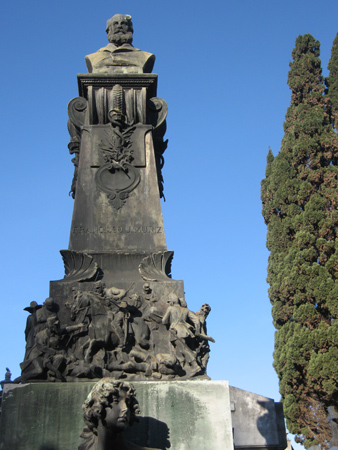
Born in 1795 in what are now the northern suburbs of Buenos Aires, Francisco Javier Muñiz dedicated his life to serving Argentina & became one of its first internationally acclaimed scientists.
Muñiz was only 12 years old when the British invaded for the second time in 1807. Although technically too young to fight, he defended the city & received a bullet wound in his left leg… this seemed to foreshadow a lifelong involvement with the military. He opted to study medicine at the age of 19 when Cosme Argerich opened the Instituto Médico-Militar in 1814 to train surgeons for military service. Muñiz remained under the tutelage of Argerich until transferring to the medical school at the newly-created University of Buenos Aires in 1822.
His first major assignment came under Coronel Juan Lavalle in early campaigns to take territory from the indigenous population. Muñiz did more than lead the medical unit; he studied customs of the indigenous people & made his first forays in natural history. The 1826 war with Brazil took Muñiz to foreign lands where he was ordered by General Alvear to accompany Lavalle’s troops once again. Lavalle took a bullet in the leg, & Muñiz was fortunately there to save him. Returning to Argentina, Muñiz received multiple honors.
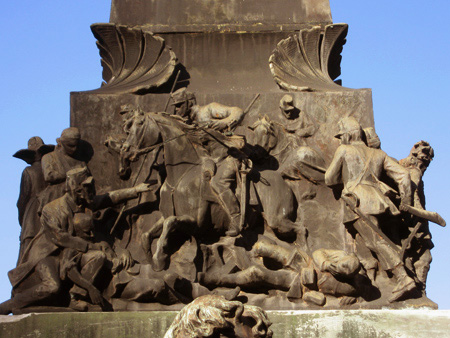
In 1828 Muñiz married & settled down in Luján, just west of Buenos Aires. Better for his health & given the opportunity to engage in scientific study, Muñiz put to practice everything he had learned while on the battlefield. His most significant contribution to Argentina was being the first to use cowpox serum as a vaccination against smallpox. In fact, Muñiz experimented at the same time as Edward Jenner… his results granted Muñiz membership in the Royal Jennerian Society.
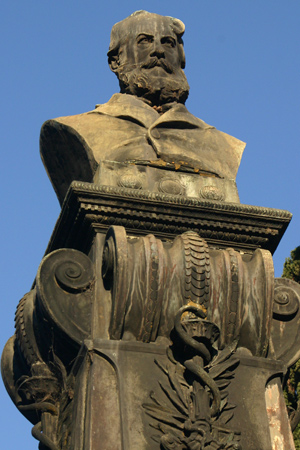
Living in Luján also gave Muñiz time to pursue his other great interest: paleontology. During his first service with Lavalle, Muñiz discovered remains of a glyptodont… the first ever recovered. A 10,000 year-old version of today’s armadillo, glyptodonts resembled a mix between a beaver & a turtle & some were as big as a Volkswagen Beetle. Similar fossils have been uncovered in Buenos Aires while building new subway stations. Displays can be found on the D Line (Juramento) & on the B Line (Tronador):
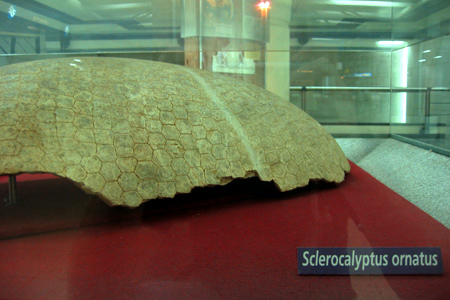
Unfortunately Muñiz did not publicly document his discovery & a French explorer 13 years later took credit for finding a new species. Undeterred, Muñiz received praise for sending 11 boxes of fossil specimens to Paris & even corresponded occasionally with Charles Darwin. Darwin wrote to Muñiz in 1847:
Your pamphlet on the scarlet fever I will present to the Royal College of Surgeons. I cannot adequately say how much I admire your continued zeal, situated as you are without means of pursuing your scientific studies and without people to sympathise with you, for the advancement of natural history; I trust that the pleasure of your pursuits affords you some reward for your exertions.
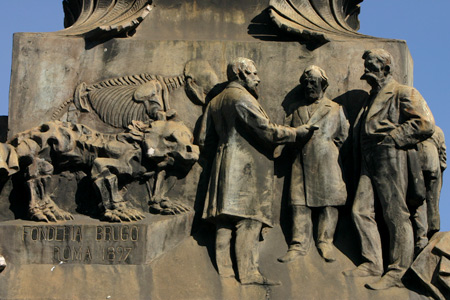
Muñiz eventually returned to Buenos Aires where he directed the medical school & served as a member in both houses of Congress until the start of the War of the Triple Alliance. Even though he was 70 years old, Muñiz offered to go to the front lines. When refused, he disguised himself as a peasant, took surgical equipment & went anyway. Muñiz remained in northern Argentina fighting a cholera epidemic until his wife passed away in 1868.
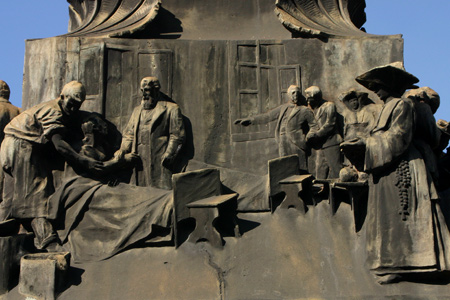
Returning once again to Buenos Aires, Muñiz officially retired but decided to come to the rescue once again when a massive outbreak of yellow fever hit the city in 1871. Catching yellow fever himself, Muñiz became one of the 14,000 casualties. After his death, the private collection of Muñiz became the foundation of the Museum of Natural Sciences located in Parque Centenario in the neighborhood of Caballito:
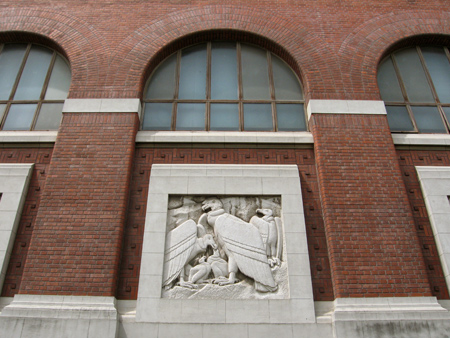
The crypt became a National Historic Monument in 1946. The enormous sculpture of a woman holding the rod of Asclepius in one hand & a sword in the other (medicine + military) was Ettore Ximenez—the same Roman sculptor responsible for Manuel Belgrano’s tomb in the patio of the Iglesia de Santo Domingo:
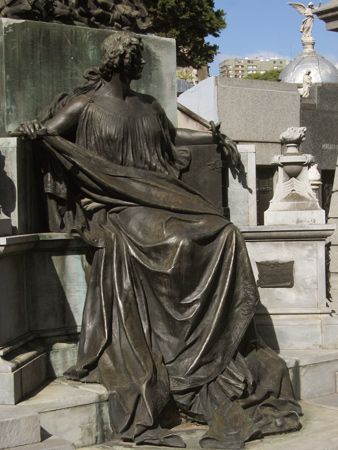
Be First to Comment